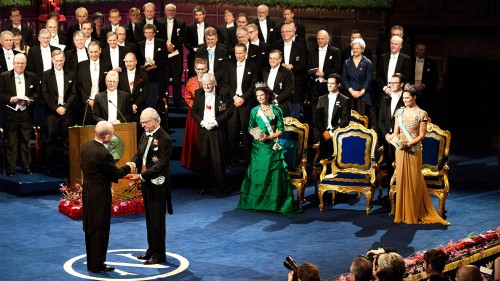
It has now become an obvious thing to state that the world is moving in a pace unprecedented in its history. Until few centuries ago, while human civilization did not know the composition of atoms, now is using the most advanced of technologies in the most compact of forms. While Quantum mechanics is able to understand the physics at the subatomic level, condensed matter physics is now able to create objects in various forms of the order of a few atoms. All this is to say that the physics research in various fields has been able to achieve the unimaginable only in the last few decades. Physics research needless to say comes from physics education. Therefore it is important to understand the nature of physics education to make a reasonable statement on the nature of physics research being undertaken or shall be undertaken in the foreseeable future.
Nobel prize winners in the field of psychology / medicine included physicists like Rosalyn Yalow, Max Delbruck and Allan Cormak. Nobel prize winners in the field of Chemistry included physicists Ernst Rutherford, Marie Curie and Alan Heeger. Furthermore, physicist Andrei Sakharov won the Nobel peace prize. They are but a few examples to show that physicists are making more than a dent in trying to understand the working of the nature in various other fields from the perspective of physics. Quality in research comes from quality in graduate programs. Though a lot of students enrolled in physics programs at the graduate level during the Second World War, graduate enrollment witnessed a fall in the later decades. For a while, the volume of Bachelor degree holders in physics was not able to find accommodation at graduate programs due to shortage in numbers. Later, after one found that the technological revolutions that have been possible in the recent decades were a result of closely connected revolutions in the field of physics, physics education found more funding for both graduate and undergraduate programs.
It has been noted that enrollments in physics programs for teenagers measure both the quality and quantity of physics research graduates. Unlike earlier times where physics tuition and education at the classroom level was a one way process where the teacher gives all the inputs and the processing and ability to solve problems were left to the capacity of the students, we are now in need of a more interactive environment of teaching and learning. Physics can be easily understood when there is more interaction among the students and with the teacher. Discussions amongst students have shown to produce better results than traditional teaching methodology. Several institutions and schools around the world are now adapting to new teaching methodologies. Students have access to more information with the dawn of online education and enormous material that is at available at one’s command. To make this a constructive access to information, it is important that the students and teachers at secondary school levels are more trained and informed with respect to the new methodologies and use them to learn and venture into the beautiful world of scientific research where one can directly translate one’s ability to solve physics problems to the ability to solve real world issues.
